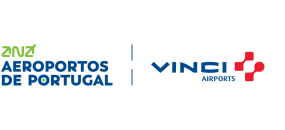Ryanair and TAP Lead Rise in Portugal's Airport Numbers
19 February 2015
The ANA airport group which is responsible for the management of airports in Mainland Portugal including Lisbon, Porto, Faro and the Beja civilian terminal, as well as airports in the Azores and Madeira Autonomous Regions, recorded a growth of 9.5 percent in commercial passenger traffic in 2014 compared to the previous year.
Ryanair and TAP Lead Rise in Portugal's Airport Numbers :: Routesonline
ANA - Aeroportos de Portugal’s year-end results show that airports in Portugal have continued to register an increase in passenger traffic and low-cost airlines.
The ANA airport group which is responsible for the management of airports in mainland Portugal including Lisbon, Porto, Faro and the Beja civilian terminal, as well as airports in the Azores and Madeira Autonomous Regions, has recorded a growth of 9.5 percent in commercial passenger traffic in 2014 compared to the previous year.
Low-cost airlines grew 16.6 percent in comparison to 2013, bringing a total of 1.85 million passengers to Portuguese airports. Irish low-cost carrier Ryanair is due to open its 72nd base in The Azores this April, while easyJet is set to station two Airbus A320s at Francisco de Sá Carneiro airport in Porto from spring 2015, meaning this figure is likely to increase even further.
This will be Ryanair’s fourth Portuguese base, and the airline will base a Boeing 737-800, offering three new routes to Lisbon (twice daily), Porto (daily) and London Stansted.
Aircraft movements at Portuguese airports have increased by 5.8 percent, with available seats also increasing 7.3 percent in comparison to 2013. Load factors on commercial flights have also increased to 80.8 percent, compared to 79.2 percent the previous year.
Portugal’s largest airport – Lisbon, has witnessed a 13.3 percent increase in passenger traffic compared to 2013. Accounting for 70.1 percent of total growth in the ANA Group, the airport reached a record 18.14 million passengers in 2014 – a huge increase of over 2.1 million passengers in total. Porto also recorded a large boost in passenger traffic, with an increase of 8.8 percent overall in comparison to 2013. Both airports registered one of the highest passenger growth rates among its European peers.
The main origin and destination markets to and from Portugal have all recorded an increase in passenger numbers - most notably Belgium, which has witnessed a 43.4 percent increase in passenger traffic, a total of nearly 356,000 overall in comparison to 2013. The United Kingdom recorded an increase of nearly 650,000 passengers, highlighting it as the most popular O&D market ahead of Portugal, France and Germany.
In comparison to 2013, Portugal recorded an increase of nearly 578,000 passengers to and from France – a boost of 14.8 percent in passenger traffic between the two markets. Domestic demand within Portugal increased by nearly 270,000 passengers – up 5.1 percent in comparison to 2013.
The low-cost airlines may be making their presence felt across the Portuguese market, but national carrier TAP Portugal is also playing an important role supporting travel to, from and within the country. The airline is responsible for more than a third of the passengers flying through the country’s airports and reached a record number of passengers in 2014, with over 13 million being handled for the first time – a six percent increase compared to 2013.
Although TAP Portugal has seen its share of traffic in the country slip from 38.6 percent in 2013 to 37.3 per cent in 2014, it has been responsible for the second largest increase in passengers in Portugal’s airport system in 2014 handling over 735,000 additional passengers in 2014. Only Ryanair carried more additional passengers between 2013 and 2014, growing from 4.2 million to 5.3 million annual passengers.
ANA is part of the VINCI Airports that encompasses 23 airports across France, Portugal and as far afield as Cambodia. As both an investor and operator, VINCI Airports is able to offer a broad range of expert services and can act simultaneously as the concession holder, operator and prime contractor of an airport.


